

The ABC's of a Chatbot - with examples. Chatbot language requires a whole other dictionary.
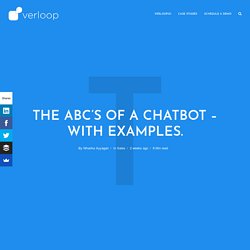
It’s recommended to be aware of such jargon in order to understand the intricacies of a chatbot. This entire blog-piece is simplified into understandable language and contains examples for you to get better clarity. I’d suggest this piece to people ailing from a non-chatbot industry as well, as too much knowledge never hurt anyone. 64% of business respondents believe that chatbots allow them to provide a more personalized service experience for customers. Chatbots are now considered the fad to survive in this business world, where automation is the key to several actions. So, here are the terms that we’ll be covering within this blog: AI or artificial intelligence is intelligence demonstrated by machines. The ability to derive search results with just speaking and not typing it out is through the presence of AI. Bots usually use the technique of pattern matching.
Example : Sentences under Skincare Class : What should I use for oily skin? 2. Google to offer 360-degree Street View for 40 National Parks and cultural sites. In the age of virtual and augmented reality, vacations in the near future could mostly take place from behind a headset.
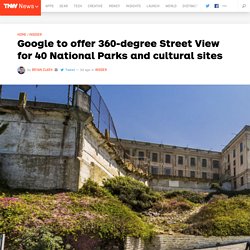
In anticipation of this, Google has teamed up with the National Park Service to offer 360-degree Street View imagery for 40 National Parks and cultural sites. In addition to Street View virtual tours, you’ll also have access to a sort of online museum featuring historical artifacts and and “national treasures” complete with descriptions and accompanying history. From Alcatraz Island to the Tuskegee Institute, your virtual vacation is just a couple of mouse clicks away.
Sites in VR - The VR App for Those Without VR Headsets. Sites in VR is a free Android and iOS app that provides a 1700 virtual reality views of significant landmarks around the world.

The app is a good one for those who would like to experience a bit of virtual reality without having to use a virtual reality headset. Sites in VR provides imagery that you can navigate through by moving your phone or tablet in a manner similar to that of using a virtual reality viewer like Google Cardboard. To use the app simply open it then select a country, city, or landmark type. Then on the next screen select from a menu of landmarks to view. Once you've made a selection you will be able to view the imagery and navigate through it by moving your phone or tablet. Virtual Reality Discovery Channel App - Virtual Field Trips for iOS & Google.
The concept of virtual reality in education has grown wildly in the past few months – and it is more affordable than you may imagine.
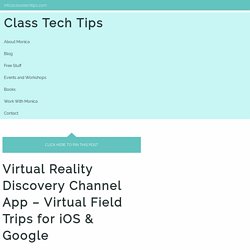
A smartphone a carefully folded piece of cardboard (aka Google Cardboard) can transport students to the depths of an ocean or the middle of the wilderness. The Discovery Channel now offers a powerful virtual reality experience. With the Virtual Reality Discovery Channel app you can take students on field trips around the world. How does it work? Students can slide their mobile device into a Google Cardboard or simply point their screen in different directions.
The folks at the Discovery Channel have loaded this app with lots of great content. Bbc 360. 7 Favorite Nearpod Virtual Reality Lessons. Looking to bring virtual reality to your classroom?
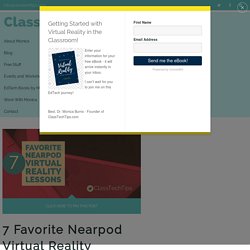
Nearpod’s virtual reality lessons provide students with fantastic ways to experience learning material. I’m a big fan of Nearpod and have shared some of the reasons I love this tool in past posts (like this one). As a one-to-one classroom teacher I used Nearpod with my students in lessons in different subject areas. Nearpod can be used to make formative assessment (aka #FormativeTech) more efficient and meaningful in your classroom. Nearpod’s virtual reality lessons are the perfect choice for integrating VR experiences thoughtfully into your instruction.
These lessons are $2.99 each and the preview gives you a taste of what you’ll be able to share with students. Download my free ebook with more information on virtual reality here. The Eiffel Tower (9-12) This lesson explores shapes with students. Fibonacci in Nature (K-2) In this math lesson, students will explore Fibonacci numbers and complete a Fibonacci sequence. The Maya (6-8) Virtual Reality Education Spotlight: Parks Explorer Classroom Field Trip. This past year I’ve been pretty excited about the potential for virtual reality in education.
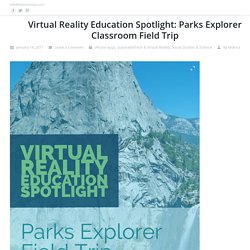
This weekend I visited Austin, Texas to meet with fellow Nearpod Pionears who are also pumped about how virtual reality can be used in the classroom. Although I’ve already shared some of my favorite virtual reality lessons (here’s the Nearpod list) and some of my favorite Google Cardboard apps (like these five), I’m excited to kick off a new series of posts on virtual reality education tools for the classroom. Parks Explorer is an app for iOS and Android devices that works with headsets like Google Cardboard (grab yours for under $10).
This app lets users take a trip to different national parks. Of course there is nothing quite the same as looking at El Capitan in person, if taking a field trip to Yosemite is out of the question for your students, a virtual field trip might be in order. Join the ClassTechTips.com newsletter! Yours in Learning, Monica :) Fantastic, you're almost finished! Monica. National Geographic. 9 Must-Have Virtual Reality Tools for Teaching with Google Cardboard. Yesterday I had the chance to lead a session for teachers on favorite tools for the reading classroom at the State of Maryland’s Annual Reading Conference.
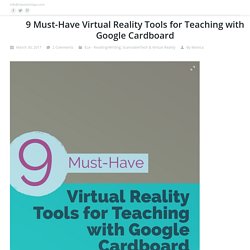
So what does this have to do with Google Cardboard? Well halfway through the session I shared Nearpod, a fantastic formative assessment (aka #FormativeTech) tool for teachers. In addition to embedding interactive activities there is the option to add a virtual reality experiences into your lesson. It was so much fun seeing teachers from across the state of Maryland standing up in the conference room and spinning around as they viewed a gorgeous panoramic picture of Santorini on their mobile devices. Capturing Everest Virtual Reality: Follow complete climb of Mt. Everest. When Jeff Glasbrenner lost his leg in a tractor accident at the age of 8, his doctors gave him a list of all the physical activities he would never again be able to attempt.
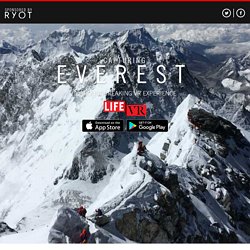
No swimming, no biking, no sports. Despite his craving for competition, he listened to those orders for a long time. And then, 12 years after his accident, he stopped listening. First he found wheelchair basketball. Then, he started biking. Austin Murphy details Glasbrenner’s incredible story here. To see photos of the group's seven-week climb through the most harrowing of conditions on Everest click here. Could a radical diet propel you to the peak of Everest? Want to learn more about how the Everest project came together?